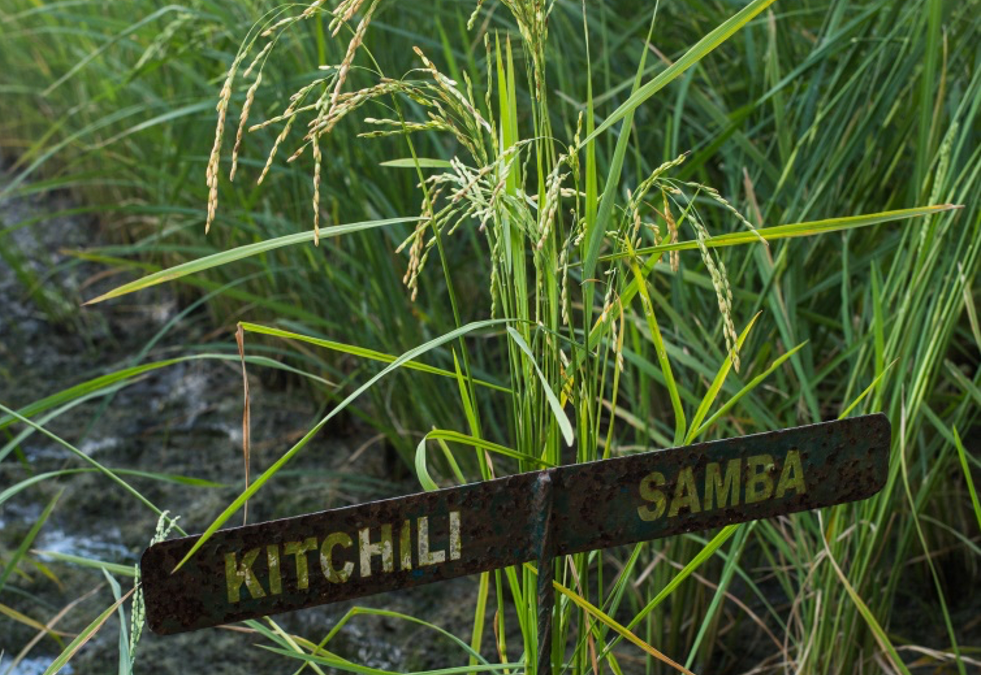Kitchili Samba is a traditional rice variety popular for its use in the South Indian meal and also for making a special dish biriyani. Gomathinayagam of Vivasaya Seva Sangam, Puliyangudi, Tirunelveli Dist. obtained seeds of this variety from CIKS and cultivated it during the Samba season of the year 2000. He raised the seedling for 1 acre using 40 kgs of seeds. The seedlings were transplanted on the 30th day. He used 40 loads of farmyard manure while preparing the main field. Before transplantation he irrigated the main field with dilute slurry. On the 25th day after transplantation he irrigated the field with cowdung solution. On the 30th day a litre of cow’s urine diluted in 10 litres of water was sprayed. On the 40th day he sprayed panchakavya using a power sprayer. Only one weeding was done.
Preparation of Panchagavya
For preparing panchagavya Gomathinayagam took 5 litres of slurry, 3 litres of cow’s urine, 2 litres of cow’s milk, 2 litres of curd prepared from cow’s milk and 1 litre of ghee. All these were put in a wide mouthed vessel and left in a shady place. The solution was mixed by hand everyday in the morning and evening. The panchagavya is ready on the ninth day and can be used for the next 30 days. Since ghee does not dissolve easily he used a power sprayer. Three litres of panchagavya were diluted with 100 litres of water and sprayed. After spraying panchagavya on the 40th day after transplantation he irrigated the field. One hundred and thirty days after transplantation the crop was ready for harvest. He got an yield of 1400 kg.
According to Gomathinayagam, this variety was easy to cultivate and tasty to eat. It was extremely good for preparing pongal and pepper rice. Gomathy Nayagam mentions that the yield could be increased over a period of time by increasing the soil fertility gradually. He plans to distribute seeds of this variety to others in his area. He suggests that to preserve the soil quality and the environment it is better to cultivate such varieties organically.


